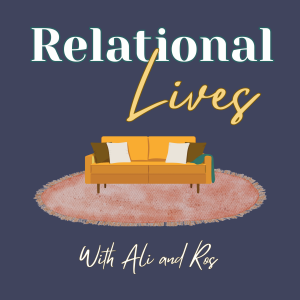
Thursday May 22, 2025
EP 10: What is an Avoidant Attachment Style?
In this episode, we explore the avoidant attachment style—its origins, signs, and ways to manage its effects on relationships. We discuss how it often develops from unmet emotional needs in childhood, leading to a protective “unplugging” from emotions. We highlight behaviours like emotional distancing, people-pleasing, and ghosting, alongside strengths such as excelling in practical crises and careers. We also address challenges in romantic relationships, like discomfort with intense emotions, and offer empathy for why this style exists as a survival mechanism. Tune in for our three takeaway tips to help you reflect, understand yourself better, and foster deeper connections.
Show Notes:
Episode: What is an avoidant attachment style?
Welcome to our latest episode, where we unpack the avoidant attachment style! We’re here to help you understand how it develops, recognise its signs, and find ways to navigate its impact on your relationships. With compassionate insights and practical steps, this episode is all about fostering self-awareness and connection with clarity and empathy.
In This Episode:
What Is Avoidant Attachment? We introduce the style and its roots (starts around 0:00, 00:00:06:12).
Attachment Styles Overview: A quick recap of secure, anxious, and avoidant styles (around 1:00, 00:01:19:20).
How It Develops: Unmet emotional needs in childhood lead to “unplugging” (around 3:00, 00:03:14:25).
A Survival Strategy: Why avoidant individuals deactivate emotions (around 5:00, 00:05:17:26).
The Stigma: Addressing the negative stereotypes around avoidant attachment (around 7:00, 00:07:21:27).
Recognising the Signs: Emotional distancing, people-pleasing, and more (around 9:00, 00:09:24:22).
Strengths: Thriving in crises and career success (around 12:00, 00:12:05:23).
Relationship Challenges: Dating, ghosting, and seeking “the one” (around 15:00, 00:15:27:17).
Ghosting and Orbiting: Why these behaviours happen (around 21:00, 00:21:37:27).
How to Manage It: Self-reflection, therapy, and sharing with partners (around 27:00, 00:27:15:13).
Takeaway Tips: Three steps to reflect and connect (around 32:00, 00:32:34:27).
Three Takeaway Tips:
Reflect on Your History: Write down what in your past might have led to this style—why you unplugged emotionally (00:33:00:24).
Identify Distancing Behaviours: List the behaviours you notice and what’s not working in your relationships (00:33:26:06).
Share with Your Partner: Open up about your reflections and be curious about yourself with kindness (00:33:54:26).
Resources Mentioned:
We reference our earlier episode on attachment styles (mentioned at 00:00:57:17) for a broader overview—check it out: https://www.youtube.com/watch?v=tmAoZfhTbTc
We mention Stan Tatkin’s book Wired for Dating (00:30:25:10) as a helpful resource for dating with attachment styles in mind.
Check out Nothing's Wrong: A Man's Guide to Managing His Emotions by David Kundtz for understanding emotional expression (mentioned at 00:30:44:21): https://www.amazon.co.uk/Nothings-Wrong-Guide-Managing-Emotions/dp/1684810280
Disclaimer:
Please remember, this is not meant to be a replacement for personal therapy and is for information and self-reflection only. Please reach out to an appropriate professional in your area if you feel you need individualised help.
Credits:
Music by: Stile Tree Music
Produced by: Synergy Podcast Studio
Connect With Us:
Have a question or want to share your thoughts on attachment styles? Reach out at Relationallives@gmail.com.
Subscribe for more episodes on mental health, relationships, and self-understanding.
Thanks for Listening!
If you found this episode helpful, please leave a review on Podbean or share it with a friend. See you next time as we continue to explore the messy, brilliant human experience!
No comments yet. Be the first to say something!